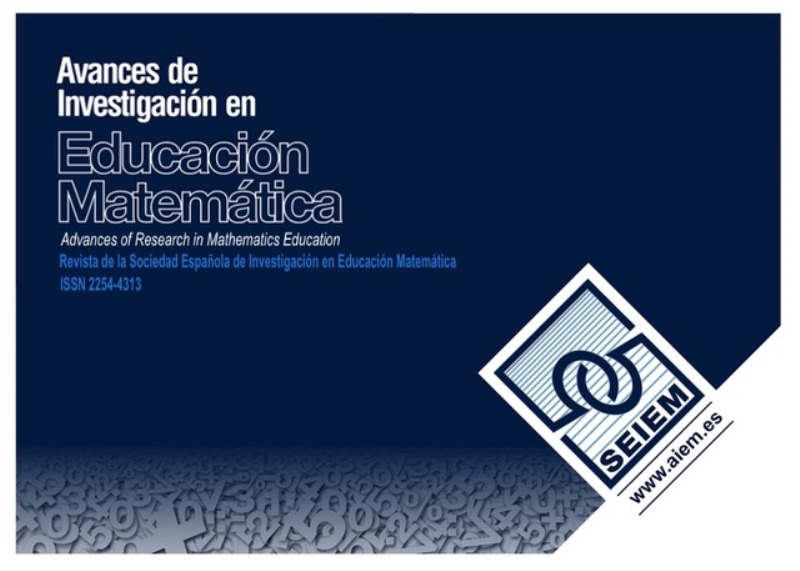What’s new with APOS theory? A look into levels and Totality
DOI:
https://doi.org/10.35763/aiem21.4245Keywords:
APOS theory, Levels, Transition, Totality, Mental structures and mechanismsAbstract
This paper focusses on developments concerning transitional aspects of learning from the perspective of APOS (Action—Process—Object—Schema) theory. Recent investigations about levels between stages and Totality as a possible new structure are commented on, as well as offering related pedagogical suggestions and ideas for future research.
Downloads
References
Arnon, I. (1998). In the mind’s eye: How children develop mathematical concepts—Extending Piaget’s theory (Unpublished doctoral thesis). Haifa University, Israel.
Arnon, I., Cottrill, J., Dubinsky, E., Oktaç, A., Roa Fuentes, S., Trigueros, M. & Weller, K. (2014). APOS Theory: A framework for research and curriculum development in mathematics education. Springer. https://doi.org/10.1007/978-1-4614-7966-6
Asiala, M., Brown, A., DeVries, D., Dubinsky, E., Mathews, D., & Thomas, K. (1996). A framework for research and curriculum development in undergraduate mathematics education. In J. Kaput, A. H. Schoenfeld & E. Dubinsky (Eds.), Research in Collegiate mathematics education II. CBMS issues in mathematics education (Vol. 6, pp. 1–32). American Mathematical Society. https://doi.org/10.1090/cbmath/006/01
Brown, A., McDonald, M. & Weller, K. (2010). Step by step: Infinite iterative processes and actual infinity. In F. Hitt, D. Holton y P. W. Thompson (Eds.), Research in Collegiate Mathematics Education VII CBMS Issues in Mathematics Education, 16, (pp. 115-141). American Mathematical Society. https://doi.org/10.1090/cbmath/016/05
Dubinsky, E., Weller, K. & Arnon, I. (2013). Preservice teachers’ understanding of the relation between a fraction or integer and its decimal expansion: The Case of 0.999... and 1. Canadian Journal of Science, Mathematics, and Technology Education, 13(3), 232-258. https://doi.org/10.1080/14926156.2013.816389
Dubinsky, E., Weller, K., Stenger, K. & Vidakovic, D. (2008). Infinite iterative processes: The Tennis Ball Problem. European Journal of Pure and Applied Mathematics, 1(1), 99-121.
Gueudet, G., Bosch, M., DiSessa, A. A., Nam Kwon, O. & Verschaffel, L. (2016). Transitions in mathematics education. Springer Nature. https://doi.org/10.1007/978-3-319-31622-2
Oktaç, A., Vázquez Padilla, R., Ramírez Sandoval, O. & Villabona Millán, D. (2021). Transitional points in constructing the preimage concept in linear algebra. International Journal of Mathematical Education in Science and Technology. https://doi.org/10.1080/0020739X.2021.1968523
Piaget, J. (1975). Piaget’s theory (G. Cellerier & J. Langer, Trans.). In P.B. Neubauer (Ed.), The process of child development (pp. 164–212). Jason Aronson.
Piaget, J. (1976). The grasp of consciousness (S. Wedgwood, Trans.). Harvard University Press. (Original work published 1974).
Roa Fuentes, D. S. (2012). El infinito: un análisis cognitivo de niños y jóvenes talento en matemáticas (Unpublished doctoral thesis). Cinvestav-IPN, Mexico.
Villabona Millán, D. P. (2020). Construcción de concepciones dinámicas y estáticas del infinito matemático en contextos paradójicos, del cálculo diferencial y de la teoría de conjuntos. Unpublished doctoral thesis. Cinvestav-IPN, Mexico.
Villabona, D., Roa Fuentes, S. & Oktaç, A. (2022). Concepciones dinámicas y estáticas del infinito: Procesos continuos y sus totalidades. Enseñanza de las Ciencias, 40(1), 179-187. https://doi.org/10.5565/rev/ensciencias.3277
Downloads
Published
How to Cite
Issue
Section
License
Copyright (c) 2022 Asuman Oktac

This work is licensed under a Creative Commons Attribution 4.0 International License.
The articles published in this journal are under a license Creative Commons: By 4.0 España from number 21 (2022).
Authors who publish with this journal agree to the following terms:
- Authors retain copyright and keep the acknowledgement of authorship.
- The texts published in this journal are – unless indicated otherwise – covered by the Creative Commons Attribution 4.0 international licence. You may copy, distribute, transmit and adapt the work, provided you attribute it (authorship, journal name, publisher) in the manner specified by the author(s) or licensor(s). The full text of the licence can be consulted here: http://creativecommons.org/licenses/by-nc/4.0.
- Authors are able to enter into separate, additional contractual arrangements for the non-exclusive distribution of the journal's published version of the work (e.g., post it to an institutional repository or publish it in a book), with an acknowledgement of its initial publication in this journal.
- Authors are permitted and encouraged to post their work online (e.g., in institutional repositories or on their website) prior to and during the submission process, as it can lead to productive exchanges, as well as earlier and greater citation of published work (See The Effect of Open Access).









